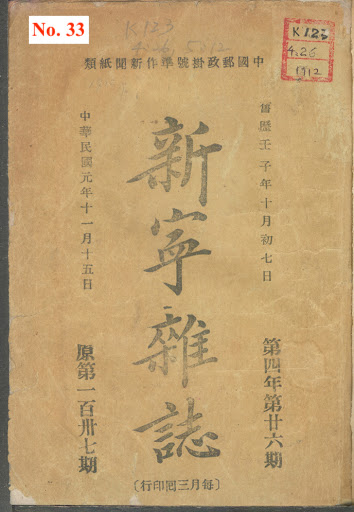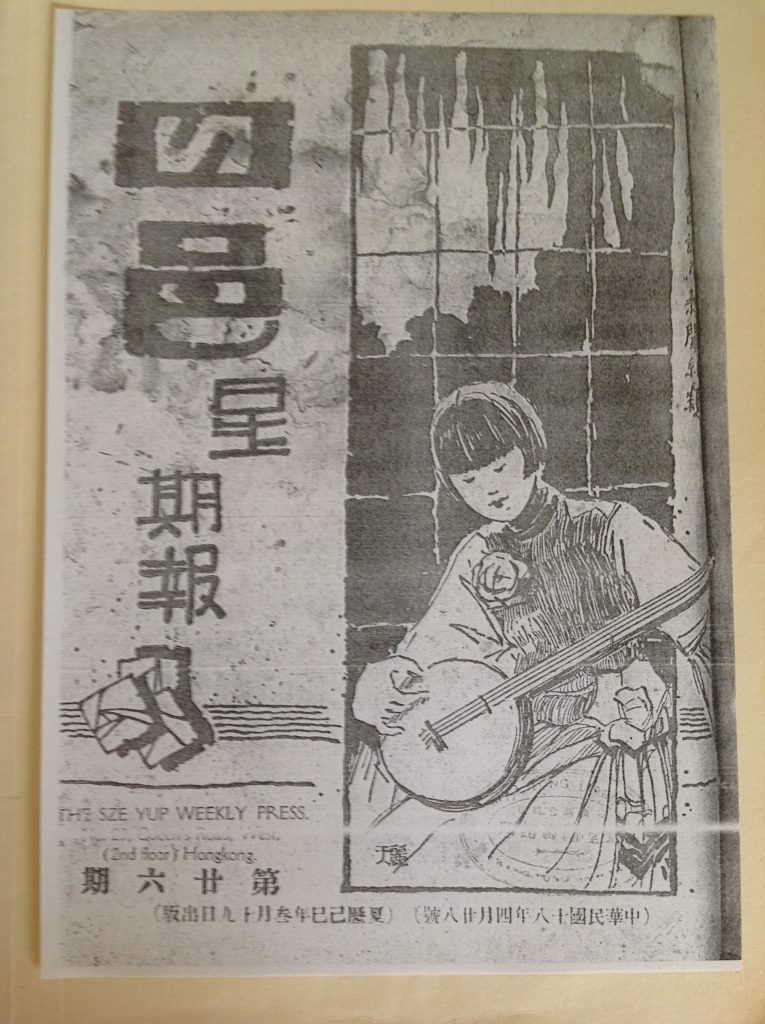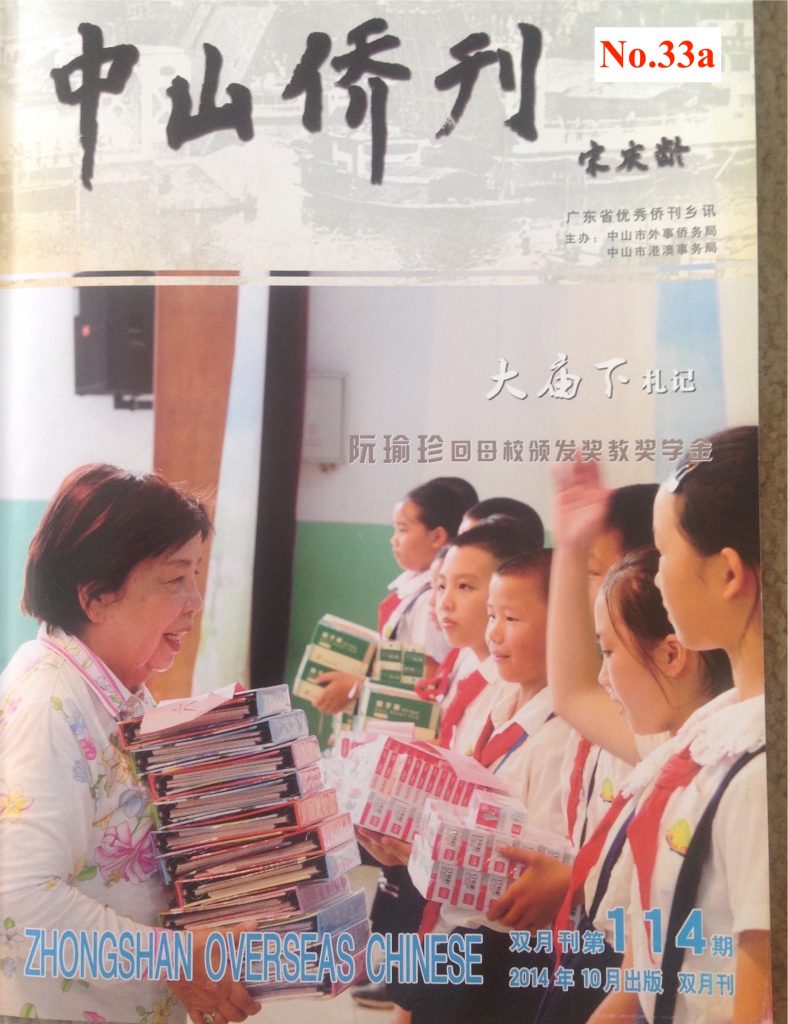
People overseas for lengthy periods are naturally keen for news of home and by the beginning of the 20th century the villages and districts of the Pearl River Delta had developed their own methods of getting the news they most desired – village news. Pictured here is a qiaokan (僑刊) first published by the people of Taishan in 1909 – 新寧雜誌 (Xinning Magazine). By the 1920s, nearly all villages, clans and districts the Pearl River Delta were producing these usually monthly magazines for distribution wherever “travellers” from the village or clan were to be found. Across and around the Pacific, in South East Asia and of course in Sydney, Melbourne, Ballarat and Atherton news of local village affairs could be found.
These publications were generally distributed through the same stores that handled remittances and letters. (See No. 19) and were financed by donations. This meant of course that quality and numbers of issues varied greatly and it is no surprise that one of the earliest and most consistently published qiaokan was the 香山良都竹秀園月報 (Xiangshan Liang Du Zhuxiuyuan Monthly). Zhuxiuyuan (竹秀園) village was an Australian dominated village from which had come some of the wealthiest men in China by the 1920s. This and numerous magazines like it shared information about events in the village, stories to uplift and entertain, information on exchange rates and crop prices, bandits, boat fares and night schools. Also published in the qiaokan were lists of who had returned home, who was leaving, letters seeking to trace people, and discussions of areas of interest such as the growing popularity in the 1920s of Cuba as a destination and a description of a journey from Shekki (now Zhongshan City) to Macao.

While the purpose of these qiaokan was to inform travellers – 旅 – (the term most commonly used in the magazines) about what was happening in their home villages, they also aimed at fostering and maintaining links between the villages and these absent members. One result of this was limitations on what those in the village could say or perhaps what those overseas wished to see made public. In the late 1920s for example, the magazine of Buck Toy (北台) village received many complaints when it published negative comments about the village. The restricted range of contents can be seen in the fact that local Zhongshan newspapers in the same period often contain items about family scandals and personal disputes involving families, while the qiaokan contain nothing of this type of material. Nevertheless not all bad news could be avoided and in 1945 with the defeat of the Japanese those travellers who had been prevented from visiting their families and villages by the occupation rushed to do so. The revived qiaokan of this time are full of tables listing families and their deaths or survival. [For more on this see: Williams, Michael. Returning Home with Glory : Chinese Villagers around the Pacific, 1849 to 1949, Hong Kong University Press, 2018, pp.104-107.]

Today maintaining links with those overseas, including the descendants of many generations, is still a major concern of the Pearl River Delta localities. Though modern day qiaokan are now produced by government departments, they do continue to operate at a local level and contain much news (good) just as did those of an earlier period.

